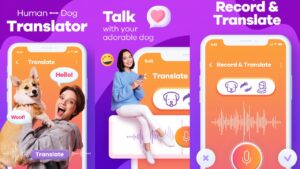A Human-to- Animal language Translator
A Human-to- Animal language Translator refers to the idea of a device that can bridge the communication gap between humans and dogs. While no technology exists that can perfectly translate human speech into “dog language” and vice versa, advancements in research, AI, and behavioral studies are helping us better understand canine communication.

Dogs primarily communicate through body language, vocalizations, and facial expressions. For example, barking can signify excitement, warning, or fear, depending on the pitch and tone. Body cues like posture, tail position, and ear movements give insights into their mood. Dogs also interpret human cues such as tone of voice, gestures, and facial expressions, making them excellent at understanding human emotions.
Technological tools like smart collars and devices such as No More Woof and Petpuls aim to interpret a dog’s physical and emotional states. While these devices can detect patterns and emotions like anxiety, excitement, or hunger, they don’t function as true translators. AI and machine learning are being used to analyze dog vocalizations and behaviors, offering insights into their mental state, but exact translation is still far off.
Dogs can understand human verbal commands through conditioning and associate words with actions or responses. They rely more on tone and context than the specific meaning of words. Similarly, humans can understand dogs better by paying attention to behavioral cues, vocal patterns, and emotional contexts.
While a real-time Human-to-Dog Translator doesn’t exist, the future may bring more advanced tools using AI, enhancing our ability to understand and respond to our dogs’ needs. For now, the best approach remains careful observation and a compassionate bond with our pets.
